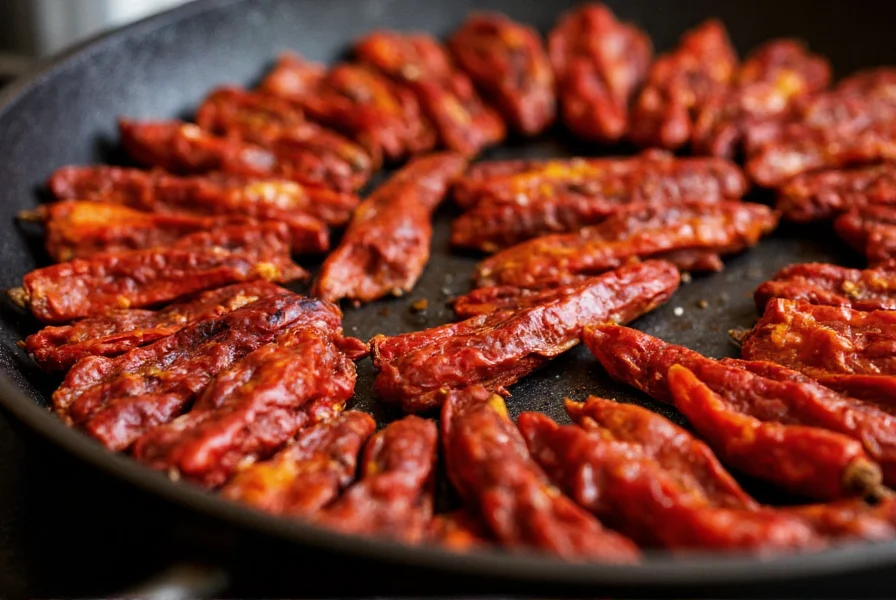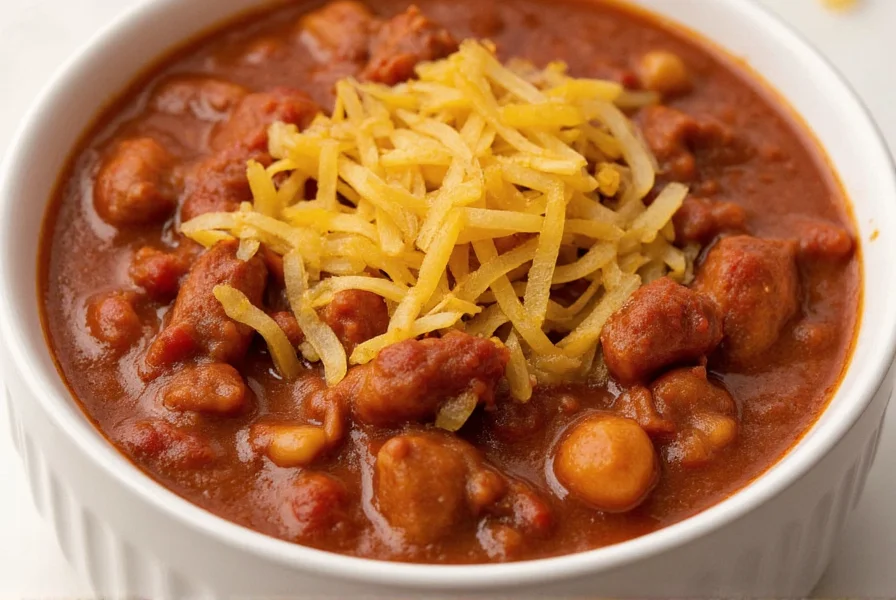Colorado-style pork chili represents a beloved regional variation that captures the essence of Southwestern cuisine. Unlike Texas chili which typically uses beef or Cincinnati chili with its unique spice blend, Colorado chili showcases pork as the star ingredient, simmered slowly in a vibrant red sauce crafted from dried chilies. The absence of beans—a point of pride for traditional Colorado chili makers—allows the rich meat flavors and complex chili pepper notes to shine through.
The Origins of Colorado Pork Chili
The history of Colorado pork chili traces back to the early 20th century when cattle ranchers and miners in the Rocky Mountain region needed hearty, warming meals that could be prepared in large quantities. While chili con carne has roots throughout the American Southwest, Colorado developed its distinctive version emphasizing local ingredients and preferences.
Traditional Colorado chili recipes often feature game meats like venison or elk, but pork became a popular alternative as settlements grew. The key differentiator remains the "colorado"—Spanish for "red"—referring to the deep crimson sauce created from dried red chilies rather than tomatoes. This characteristic gives Colorado chili its signature appearance and flavor profile that sets it apart from other regional variations.

What Makes Colorado Pork Chili Unique
Several elements distinguish authentic Colorado pork chili from other chili styles:
| Feature | Colorado Pork Chili | Other Regional Styles |
|---|---|---|
| Primary Meat | Pork shoulder or butt | Beef (Texas), ground beef (Midwest) |
| Sauce Base | Dried red chilies (New Mexico, Colorado) | Tomato-based (most other styles) |
| Beans | Traditionally absent | Common in many regional variations |
| Texture | Thick, stew-like consistency | Varies from brothy to thick |
| Flavor Profile | Earthy, complex chili pepper notes | Tomato-forward, sometimes sweeter |
Essential Ingredients for Authentic Flavor
The magic of Colorado pork chili lies in its relatively simple but carefully selected ingredients. While recipes vary by family and region, these components form the foundation of an authentic preparation:
- Pork shoulder or butt (3-4 pounds) - The marbling provides richness and tenderness
- Dried New Mexico or Colorado chilies (8-10 whole) - The heart of the "colorado" sauce
- Beef or pork broth - For depth of flavor (avoid chicken broth)
- Onion and garlic - Fundamental aromatics
- Cumin and oregano - Traditional spices that complement (not overpower) the chilies
- Bay leaves - For subtle background notes
Unlike many chili recipes, authentic Colorado-style preparation avoids tomatoes, tomato paste, and beans. The sauce develops its characteristic thickness naturally through the slow cooking process and the rehydrated chilies.
Step-by-Step Preparation Guide
Creating authentic Colorado pork chili requires patience and attention to detail. Follow these steps for the best results:
- Prepare the chilies: Remove stems and seeds from dried chilies, then toast them in a dry skillet for 30-60 seconds until fragrant. Place in a bowl and cover with hot water to rehydrate for 20-30 minutes.
- Prepare the pork: Cut pork shoulder into 1-inch cubes, trimming excess fat. Season generously with salt and pepper.
- Sear the meat: In a large Dutch oven or heavy pot, brown the pork in batches over medium-high heat. Remove and set aside.
- Create the sauce: Blend the rehydrated chilies with 2 cups of their soaking liquid until smooth. Strain through a fine-mesh sieve to remove skins and seeds.
- Build flavor: Sauté diced onions and minced garlic in the same pot until translucent. Return pork to the pot along with the strained chili sauce, broth, cumin, oregano, and bay leaves.
- Slow simmer: Bring to a gentle simmer, cover, and cook on low heat for 2.5-3 hours, or until pork is fork-tender and sauce has thickened.
- Final adjustments: Remove bay leaves, skim excess fat, and adjust seasoning as needed. For a thicker consistency, simmer uncovered for an additional 15-20 minutes.

Variations and Adaptations
While traditional Colorado pork chili follows specific guidelines, home cooks often incorporate thoughtful variations that maintain the dish's essence while adding personal touches:
- Game meat adaptation: Substitute half the pork with venison or elk for an authentic Rocky Mountain experience
- Smoked element: Add a small piece of chipotle pepper to the chili sauce for subtle smokiness
- Beer enhancement: Replace 1 cup of broth with a dark lager for added complexity
- Slow cooker method: After searing meat and preparing sauce, transfer everything to a slow cooker and cook on low for 8 hours
- Instant Pot version: Brown meat using sauté function, then pressure cook for 45 minutes with natural release
Serving Traditions and Accompaniments
Colorado pork chili shines when served with traditional accompaniments that complement its rich flavor profile:
- Cornbread: A slightly sweet cornbread provides perfect contrast to the savory chili
- Diced white onions: Fresh raw onion adds brightness and crunch
- Lime wedges: A squeeze of fresh lime juice enhances the chili's natural flavors
- Cilantro: Fresh herbs add color and a refreshing note
- Sour cream or crema: For those who prefer a cooling element
In Colorado, chili is often served in a bowl with sides rather than over spaghetti (as in Cincinnati style) or in a Frito pie. Many families enjoy it as a standalone meal, sometimes accompanied by a simple green salad.
Storage and Reheating Tips
One of Colorado pork chili's advantages is that it tastes even better the next day as flavors continue to meld. For optimal storage and reheating:
- Cool completely before storing to prevent condensation
- Store in airtight containers for up to 4 days in the refrigerator
- Freeze in portion-sized containers for up to 3 months
- Reheat gently on the stove over medium-low heat, adding a splash of broth if needed
- Avoid microwaving large quantities as it can create uneven heating
- Skim excess fat before reheating for a cleaner flavor profile
The deep, complex flavors of Colorado pork chili actually improve with time, making it an excellent make-ahead dish for gatherings or meal prep.
Frequently Asked Questions
What's the difference between Colorado chili and regular chili?
Colorado chili, or chili Colorado, specifically refers to a regional style that uses pork as the primary meat, a sauce made from dried red chilies (not tomatoes), and traditionally contains no beans. Regular chili varies widely by region but often includes beef, tomatoes, and sometimes beans.
Why doesn't Colorado chili have beans?
Traditional Colorado chili omits beans as a point of regional pride and authenticity. Purists believe beans dilute the rich meat and chili pepper flavors that define the dish. This distinguishes Colorado style from many other regional variations that commonly include beans.
Can I make Colorado pork chili without a Dutch oven?
Yes, you can make Colorado pork chili in a heavy-bottomed pot, slow cooker, or Instant Pot. While a Dutch oven provides ideal even heating for the traditional stovetop method, modern appliances work well with appropriate technique adjustments.
What are the best dried chilies for authentic Colorado pork chili?
New Mexico chilies and Colorado chilies (a specific variety grown in the San Luis Valley) are traditional choices. Ancho chilies can provide a fruitier note, while guajillo chilies add brightness. Many Colorado cooks use a blend of 2-3 chili varieties for complexity.
How spicy is authentic Colorado pork chili?
Authentic Colorado pork chili focuses on rich, complex chili flavor rather than intense heat. The dried chilies provide earthy, smoky notes with mild to moderate heat that builds gradually. You can adjust spiciness by choosing milder or hotter chili varieties or adjusting the number of chilies used.











 浙公网安备
33010002000092号
浙公网安备
33010002000092号 浙B2-20120091-4
浙B2-20120091-4